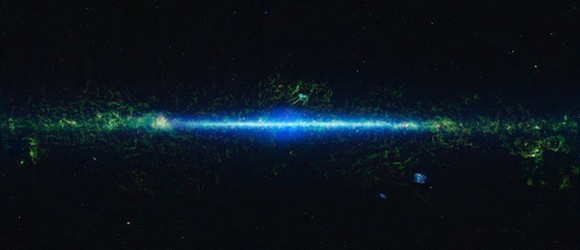WISE, the Wide-field Infrared Survey Explorer, is a telescope that began surveying the universe from our orbit in 2009. Because, as we learned in my Astronomy 101 class, the thickness of our atmosphere actually makes it harder for telescopes to see out with true accuracy, just like getting fingerprints all over your glasses. Though we’ve been launching tons of stuff into orbit for years now, the first space telescope (the Hubble) was only sent up in 1990. Space telescopes have had a huge impact on our ability to get a good accurate look at the vastness in which we float, and NASA’s release of the new information garnered with WISE has a lot of neat stuff in it.
For example, it found Earth’s first confirmed “trojan asteroid” a piece of rock that shares Earth’s orbit… just a bit behind. Trojan asteroids are hard to see from the surface of Earth even with telescopes, because the only time we’re actually pointed towards where they would be is during daylight hours. WISE’s general survey of our near (near being a relative term) surroundings also found less large near-Earth asteroids than were previously thought to exist, so we can all breathe easier.
But before WISE turned its all-seeing eye to the cheaper study of our own neighborhood, it was gazing much further afield, “scouring the entire sky using four infrared wavelengths of light, allowing it to capture objects that would otherwise have been too dim to register. In the process, it collected more than 2.7 million images and 15 trillion bytes of data, which scientists have been analyzing ever since.” Data from WISE has allowed scientists to discover a previously unknown category of Dwarf Stars, Y Dwarf Stars, the dimmest brown dwarves. One of the stars discovered was a balmy 80 degrees Fahrenheit. That’s an early summer day in these parts!
You can get a good idea of just how radical space telescopes have been to the mapping of the universe by watching this video of asteroid discoveries over time. Note the explosion of discoveries in the mid-90s, when automated computerized mapping systems began to be used, and the different pattern very late in the video around 2010, when WISE began scanning our local solar system area instead of the larger parts of the universe.
(via Wired.)








Published: Mar 15, 2012 12:40 pm